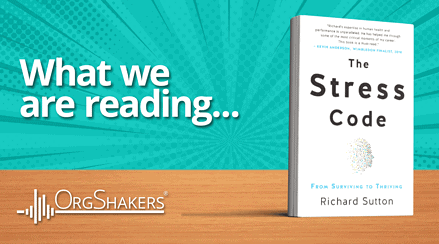Menu

Depression Vs. Burnout: Why Employers Need to Know the Difference
Burnout is recognized by the World Health Organization (WHO) as an ‘occupational phenomenon’. Whilst it is not a medical condition, it has been classified as a syndrome, meaning a collection of symptoms or signs associated with a specific health-related cause.
Burnout is a state of emotional, physical, and mental exhaustion caused by prolonged stress or overwork. It can lead to a lack of motivation, decreased productivity, and overall feelings of cynicism and detachment. Burnout often occurs when individuals feel overwhelmed, emotionally drained, and unable to meet constant demands effectively. It can impact various aspects of a person’s life, including work performance, relationships, and overall well-being. Recognizing burnout early and taking steps to address it is important to prevent further negative consequences on health and productivity.
However, many people tend to confuse burnout with depression, but the reality is that the two are very different. Whilst there is some overlap in symptoms – such as fatigue and low mood – the two differ exponentially. The most obvious difference is that whilst burnout is considered a syndrome, depression is classified as a mental health condition and often requires a professional diagnosis and psychological/medical treatment.
This is because depression can be caused by various factors, including biological dispositions (such as genetic dispositions or hormonal imbalances) or environmental factors. Burnout, however, is primarily related to stress induced by work, and typically results from prolonged exposure to job demands paired with a lack of resources and/or support.
While burnout and depression can coexist or exacerbate each other, they are separate conditions that may necessitate different approaches to management and treatment. If you suspect that you or someone you know is experiencing symptoms of either burnout or depression, always seek the right support. This can mean reaching out to your manager, going through your HR team, or potentially reaching out to your EAP provider.
As burnout is something that is likened closely to the workplace and working conditions, it is more likely for managers and employees to recognize signs of burnout amongst their colleagues. Here are a few signs you might spot when someone is on the verge of burning out:
- Increased Irritability – if you notice team members becoming easily frustrated, agitated, or showing signs of impatience, it could be a sign of burnout.
- Decreased Motivation – a lack of enthusiasm or engagement in tasks, projects, people, or meetings.
- Physical Symptoms – persistent headaches, fatigue, digestive issues, or sleep disturbances.
- Cynicism and Negative Attitude – a shift towards a more negative outlook, pessimism, or sustained criticism.
- Decreased Productivity – missed deadlines, unfinished tasks, or a decline in the quality of work.
Once an employee has been identified as suffering from burnout, it is then important to consider implementing some of the following practices:
- Encourage Work-Life Balance – be an advocate for setting boundaries between work and personal life. Encourage team members to take breaks and to take their holiday to remind them that you want them operating at their best and therefore need to ensure they are taking care of their well-being.
- Provide Support – foster a culture of open communication and support within the team. Encourage team members to share their concerns and struggles, and offer assistance where needed.
- Promote Self-Care – encourage team members to engage in activities that promote self-care, such as exercise, mindfulness, hobbies etc. Diet and water intake could also be explored, and promoted in the office through having water coolers and healthy snacks available.
- Delegate Tasks – ensure workload is distributed evenly and appropriately among team members. By delegating tasks effectively, this will help to prevent overwhelming individuals.
- Seek Feedback – regularly check in with team members to gather feedback on workload and use this feedback to make necessary adjustments.
By recognizing the signs and implementing preventive measures, you can promote a healthy work environment for your teams that allows them to work at their optimum. To discuss how we can help implement these preventative strategies, and offer training around burnout prevention, please get in touch with me at therese@orgshakers.com



